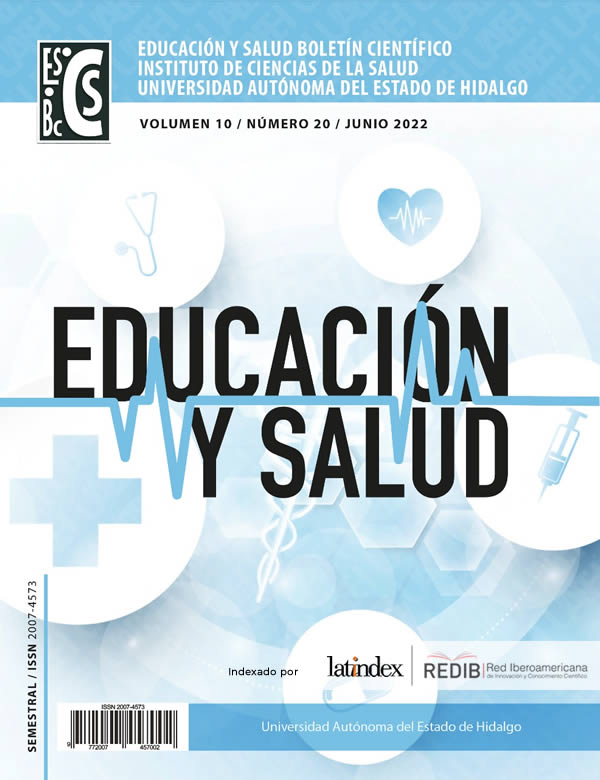¿Cómo cuidar mi salud visual? Prevención de la miopía
Resumen
Actualmente los errores de refracción son cada vez más importantes en el plano de la salud pública, se tienen registros del aumento de casos, sobre todo en Asia, donde existe hasta una prevalencia hasta del 83.3% en gente joven. Los errores de refracción representan un desajuste con la longitud axial del ojo y su potencia óptica, lo que resulta en imágenes retinianas con falta de nitidez. En la etiología de la miopía se tienen tanto factores genéticos como ambientales que coexisten en el desarrollo de la misma. En los factores, se conocen algunos tales como antecedentes familiares, la edad del afectado, años de escolaridad, así como la inteligencia, fecha de nacimiento, trabajos de proximidad, urbanización y etnia. Entre las principales actividades preventivas, se ha demostrado que la actividad al aire libre podría resultar en la disminución de la progresión, así como en la aparición de la miopía. En la actualidad ante la escolaridad intensa y prolongada, sobre todo en niños, las medidas sanitarias tales como promover las actividades al aire libre en edad escolar, así como limitar el trabajo frente a pantallas, resultan en factores protectores en el desarrollo y progresión de la miopía.
Descargas
Citas
Schiefer U, Kraus C, Baumbach P, Ungewiß J, Michels R. Refractive errors. Dtsch Arztebl Int. 2016;113(41):693-702.
Hashemi H, Fotouhi A, Yekta A, Pakzad R, Ostadimoghaddam H, Khabazkhoob M. Global and regional estimates of prevalence of refractive errors: Systematic review and meta-analysis. J Curr Ophthalmol. 2017 Sep 27;30(1):3-22.
Smith TS, Frick KD, Holden BA, Fricke TR, Naidoo KS. Potential lost productivity resulting from the global burden of uncorrected refractive error. Bull World Health Organ. 2009;87(6):431-7.
Mandel Y, Grotto I, El-Yaniv R, Belkin M, Israeli E, Polat U, et al. Season of birth, natural light, and myopia. Ophthalmology. 2008;115(4):686-92.
Cochrane GM, du Toit R, Le Mesurier RT. Management of refractive errors. BMJ. 2010;340:c1711.
Cooper J, Tkatchenko AV. A Review of Current Concepts of the Etiology and Treatment of Myopia. Eye Contact Lens. 2018;44(4):231-47.
Ostrow G, Kirkeby L. Update on myopia and myopic progression in children. Int Ophthalmol Clin. 2010;50(4):87-93.
Harb EN, Wildsoet CF. Origins of Refractive Errors: Environmental and Genetic Factors. Annu Rev Vis Sci. 2019;5:47-72.
Naidoo KS, Jaggernath J. Uncorrected refractive errors. Indian J Ophthalmol. 2012;60(5):432-7.
Wang M, Cui J, Shan G, Peng X, Pan L, Yan Z, et al. Prevalence and risk factors of refractive error: a cross-sectional Study in Han and Yi adults in Yunnan, China. BMC Ophthalmol. 2019;19(1):33.
Charman N. Myopia: its prevalence, origins and control. Ophthalmic Physiol Opt. 2011;31(1):3-6.
Recko M, Stahl ED. Childhood myopia: epidemiology, risk factors, and prevention. Mo Med. 2015;112(2):116-21.
Khader YS, Batayha WQ, Abdul-Aziz SM, Al-Shiekh-Khalil MI. Prevalence and risk indicators of myopia among schoolchildren in Amman, Jordan. East Mediterr Health J. 2006;12(3-4):434-9.
Cheng HC, Chang K, Shen E, Luo KS, Ying YH. Risk Factors and Behaviours of Schoolchildren with Myopia in Taiwan. Int J Environ Res Public Health. 2020;17(6):1967.
Rose KA, Morgan IG, Ip J, Kifley A, Huynh S, Smith W, et al. Outdoor activity reduces the prevalence of myopia in children. Ophthalmology 2008;115:1279–1285.
Kabai P, Bakk J. Myopia risk factors. Ophthalmology. 2008;115(5):919; author reply 919-20.
Quinn GE, Shin CH, Maguire MG, Stone RA. Myopia and ambient lighting at night. Nature. 1999;399(6732):113-4.
Guggenheim JA, Hill C, Yam TF. Myopia, genetics, and ambient lighting at night in a UK sample. Br J Ophthalmol. 2003;87(5):580-2.
Donovan L, Sankaridurg P, Ho A, Chen X, Lin Z, Thomas V, et al. Myopia progression in Chinese children is slower in summer than in winter. Optom Vis Sci 2012;89: 1196–1202.
Pärssinen O, Kauppinen M. Risk factors for high myopia: a 22-year follow-up study from childhood to adulthood. Acta Ophthalmol. 2019;97(5):510-518.
Pan CW, Ramamurthy D, Saw SM. Worldwide prevalence and risk factors for myopia. Ophthalmic Physiol Opt. 2012;32(1):3-16.
Walline JJ. Myopia Control: A Review. Eye Contact Lens. 2016;42(1):3-8.
Sankaridurg P, Conrad F, Tran H, Zhu J. Controlling Progression of Myopia: Optical and Pharmaceutical Strategies. Asia Pac J Ophthalmol (Phila). 2018;7(6):405-414.
Zadnik K. Myopia Prevention: Here Comes the Sun. Ophthalmology. 2020;127(11):1470-1471.
Gunes A, Demirci S, Tok L, Tok O, Koyuncuoglu H, Yurekli VA. Refractive Errors in Patients with Migraine Headache. Semin Ophthalmol. 2016;31(5):492-4.
Roth Z, Pandolfo KR, Simon J, Zobal-Ratner J. Headache and refractive errors in children. J Pediatr Ophthalmol Strabismus. 2014;51(3):177-9.
Kaštelan S, Gverović-Antunica A, Pelčić G, Gotovac M, Marković I, Kasun B. Refractive Changes Associated with Diabetes Mellitus. Semin Ophthalmol. 2018;33(7-8):838-845.
Hashemi H, Iribarren R, Morgan IG, Khabazkhoob M, Mohammad K, Fotouhi A. Increased hyperopia with ageing based on cycloplegic refractions in adults: the Tehran Eye Study. Br J Ophthalmol. 2010;94(1):20-3.
Jeganathan VSE, Robin AL, Woodward MA. Refractive error in underserved adults: causes and potential solutions. Curr Opin Ophthalmol. 2017;28(4):299-304.
Singh NK, James RM, Yadav A, Kumar R, Asthana S, Labani S. Prevalence of Myopia and Associated Risk Factors in Schoolchildren in North India. Optom Vis Sci. 2019;96(3):200-205.
Lagrèze WA, Joachimsen L, Schaeffel F. Current recommendations for deceleration of myopia progression. Ophthalmologe. 2017;114(1):24-29.
Wu PC, Chen CT, Lin KK, Sun CC, Kuo CN, Huang HM, et al. Myopia Prevention and Outdoor Light Intensity in a School-Based Cluster Randomized Trial. Ophthalmology. 2018;125(8):1239-1250.
Ramamurthy D, Lin Chua SY, Saw SM. A review of environmental risk factors for myopia during early life, childhood and adolescence. Clin Exp Optom. 2015;98(6):497-506.
Wu PC, Chuang MN, Choi J, Chen H, Wu G, Ohno-Matsui K, et al. Update in myopia and treatment strategy of atropine use in myopia control. Eye (Lond). 2019;33(1):3-13.
Rose KA, French AN, Morgan IG. Environmental Factors and Myopia: Paradoxes and Prospects for Prevention. Asia Pac J Ophthalmol (Phila). 2016;5(6):403-410.
Ang M, Flanagan JL, Wong CW, Müller A, Davis A, Keys D, et al. Review: Myopia control strategies recommendations from the 2018 WHO/IAPB/BHVI Meeting on Myopia. Br J Ophthalmol. 2020;104(11):1482-1487.
Derechos de autor 2022 Mario I Ortiz, Gabriela P. Campuzano Revilla

Esta obra está bajo licencia internacional Creative Commons Reconocimiento-NoComercial-SinObrasDerivadas 4.0.












